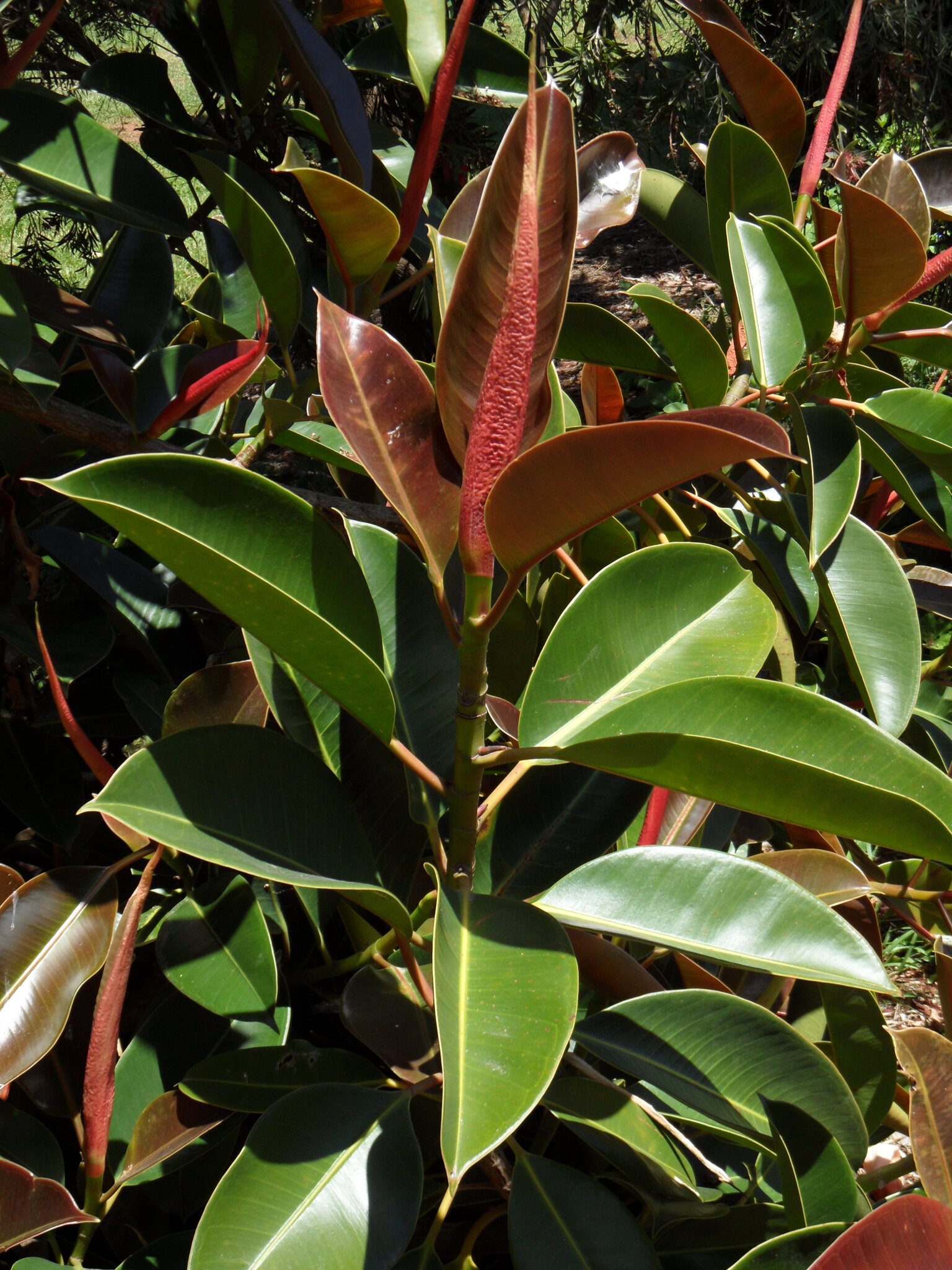
Tree to 30 m or so in nature with buttressed trunk and aerial roots, but generally much smaller in gardens. Terminal bud with 1 stipule. Leaves thick, 12-30 cm long, 10-20 cm wide, oblong to elliptic with a short point and rounded base, enclosed at first in a thin reddish sheath, coppery green becoming dark glossy green with mostly 25-30 vein pairs, hairless. Leaf stalk thick, 2.5-5 cm long. Fruits about 1.5-2 cm wide, mostly in pairs or occasionally solitary in old leaf axils, yellowish when mature.
India, Burma, Peninsula Malaysia
Generally grown as a pot plant but sometimes also in gardens in warmer areas such as Adelaide, frost tender.
A range of cultivars as house plants (also occasionally grown outdoors) include those listed under the Cultivar tab:
Latex from this tree was once tapped as the commercial source of rubber, but this is now extracted from Hevea brasiliensis.
Large, roundish leaves with all veins (including those nearest the stalk) parallel; terminal bud with 1 stipule.
VIC: Coburg (Coburg Pine Ridge Cemetery lodge).
Source: (1997). Moraceae. In: . Horticultural Flora of South-eastern Australia. Volume 2. Flowering plants. Dicotyledons. Part 1. The identification of garden and cultivated plants. University of New South Wales Press.

Leaves blackish green, dark below. 'Black Knight' is possibly a different plant, as is 'Burgundy' although both have dark leaves.
Broad leaved rubber plant. Leaves stiff, with cream midrib, reddish below. Stipules bright red. Selected as a seedling c. 1938 by Gratian van Hecke, Ghent, Belgium.
Ficus elastica 'Golden Princess'
Leaf edges and midrib finely lined in creamy gold.
Leaves large and rounded.
Ficus elastica 'Schrijveriana'
Leaves mottled cream and pale green in a mosaic pattern. This name has also been applied to plants with broad cream leaf margins. ['Schryveriana']
Margins of leaf marbled with yellow and pale green.